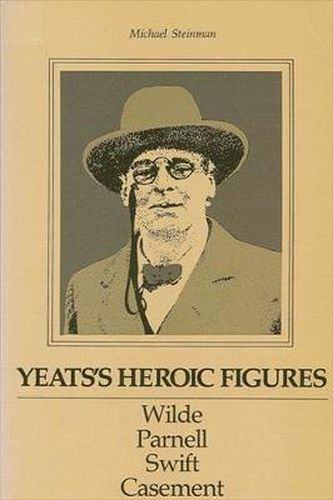Readings Newsletter
Become a Readings Member to make your shopping experience even easier.
Sign in or sign up for free!
You’re not far away from qualifying for FREE standard shipping within Australia
You’ve qualified for FREE standard shipping within Australia
The cart is loading…






Heroic man and the lies of history, the myths that surrounded them, were vital to the Irish poet William Butler Yeats. This study examines the four Anglo-Irish historical figures who dominated his life and art: Oscar Wilde, Charles Stewart Parnell, Jonathan Swift, and Roger Casement. All were creators-whether they conceived their life artistically, conceived an intellectual vision of Ireland free, or made lasting art. Their powers were matched by the magnitude of their defeat, for all, except Swift, were violently crucified by the mob for their irregular private lives. In defeat, however, they revealed transcendent heroism, as they faced their enemies with aristocratic disdain and unfailing bravery. Their constantly recreated heroic images inspired and haunted Yeats in art and politics, showed him ways to remake himself and to reconcile his devotion to art with his duty to Ireland.
Yeats’s Heroic Figures traces the intersections of the vivid figures in the human drama Yeats saw as history from 1883 to 1938, and considers their shaping forces upon Yeats’s art, philosophy, and life. It is the first study to consider these four heroes together, and it brings to light much material previously neglected in comprehensive studies of Yeats.
$9.00 standard shipping within Australia
FREE standard shipping within Australia for orders over $100.00
Express & International shipping calculated at checkout
Heroic man and the lies of history, the myths that surrounded them, were vital to the Irish poet William Butler Yeats. This study examines the four Anglo-Irish historical figures who dominated his life and art: Oscar Wilde, Charles Stewart Parnell, Jonathan Swift, and Roger Casement. All were creators-whether they conceived their life artistically, conceived an intellectual vision of Ireland free, or made lasting art. Their powers were matched by the magnitude of their defeat, for all, except Swift, were violently crucified by the mob for their irregular private lives. In defeat, however, they revealed transcendent heroism, as they faced their enemies with aristocratic disdain and unfailing bravery. Their constantly recreated heroic images inspired and haunted Yeats in art and politics, showed him ways to remake himself and to reconcile his devotion to art with his duty to Ireland.
Yeats’s Heroic Figures traces the intersections of the vivid figures in the human drama Yeats saw as history from 1883 to 1938, and considers their shaping forces upon Yeats’s art, philosophy, and life. It is the first study to consider these four heroes together, and it brings to light much material previously neglected in comprehensive studies of Yeats.